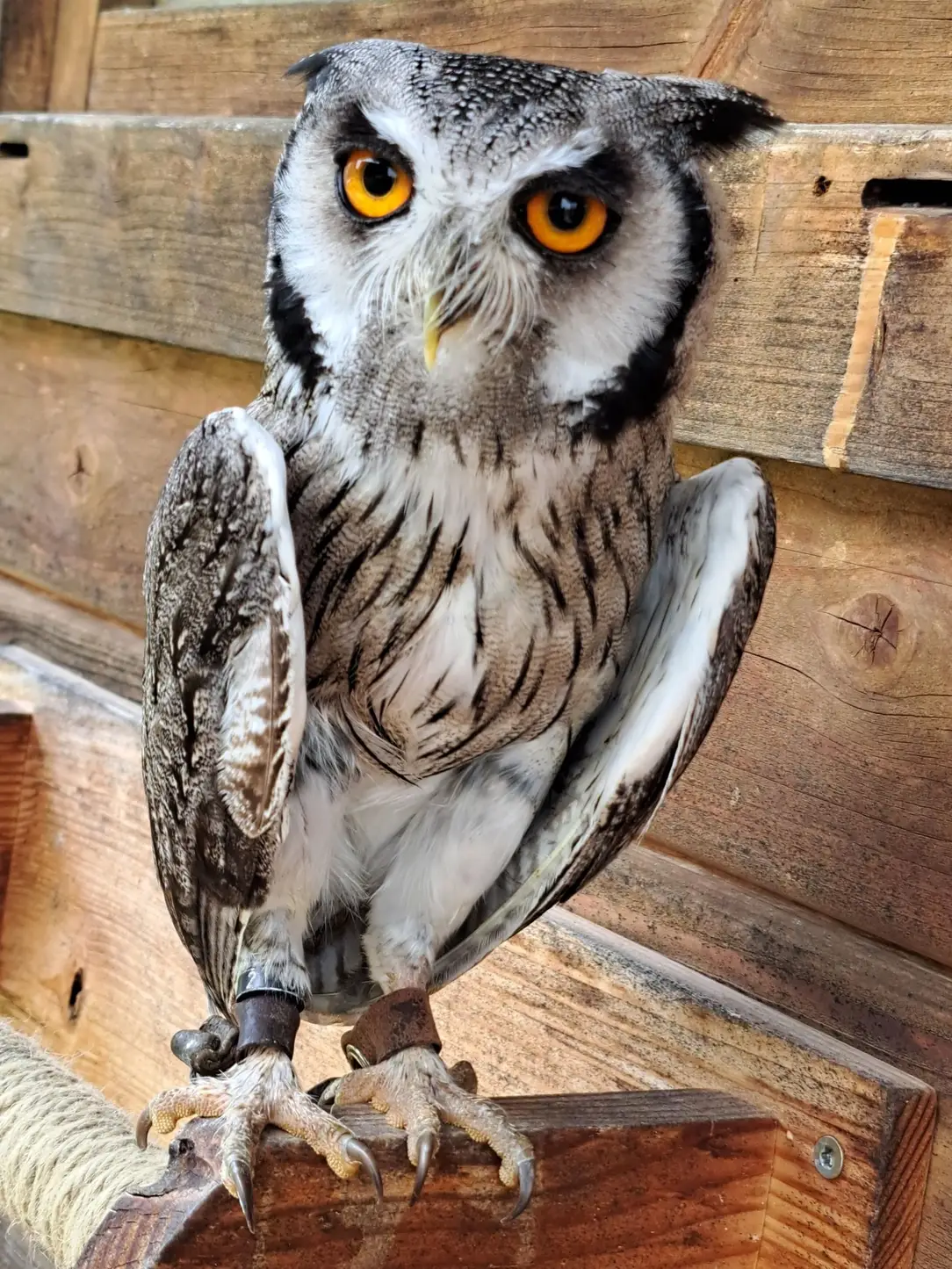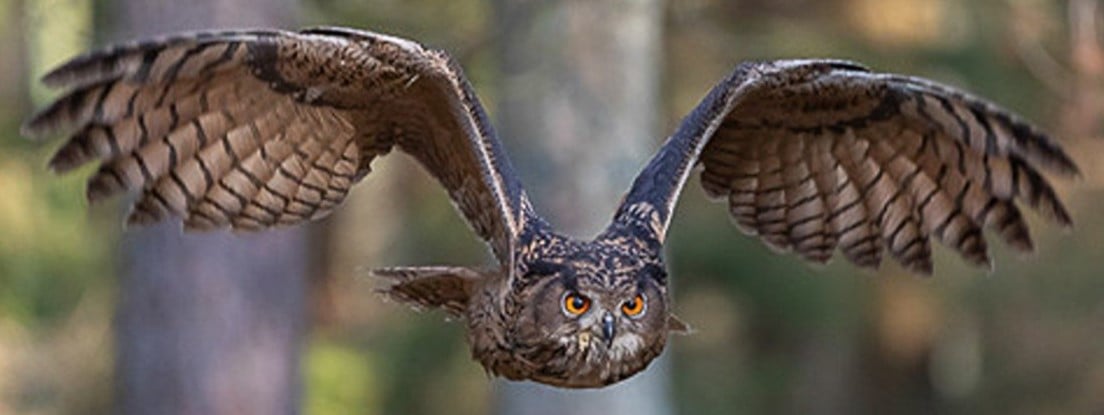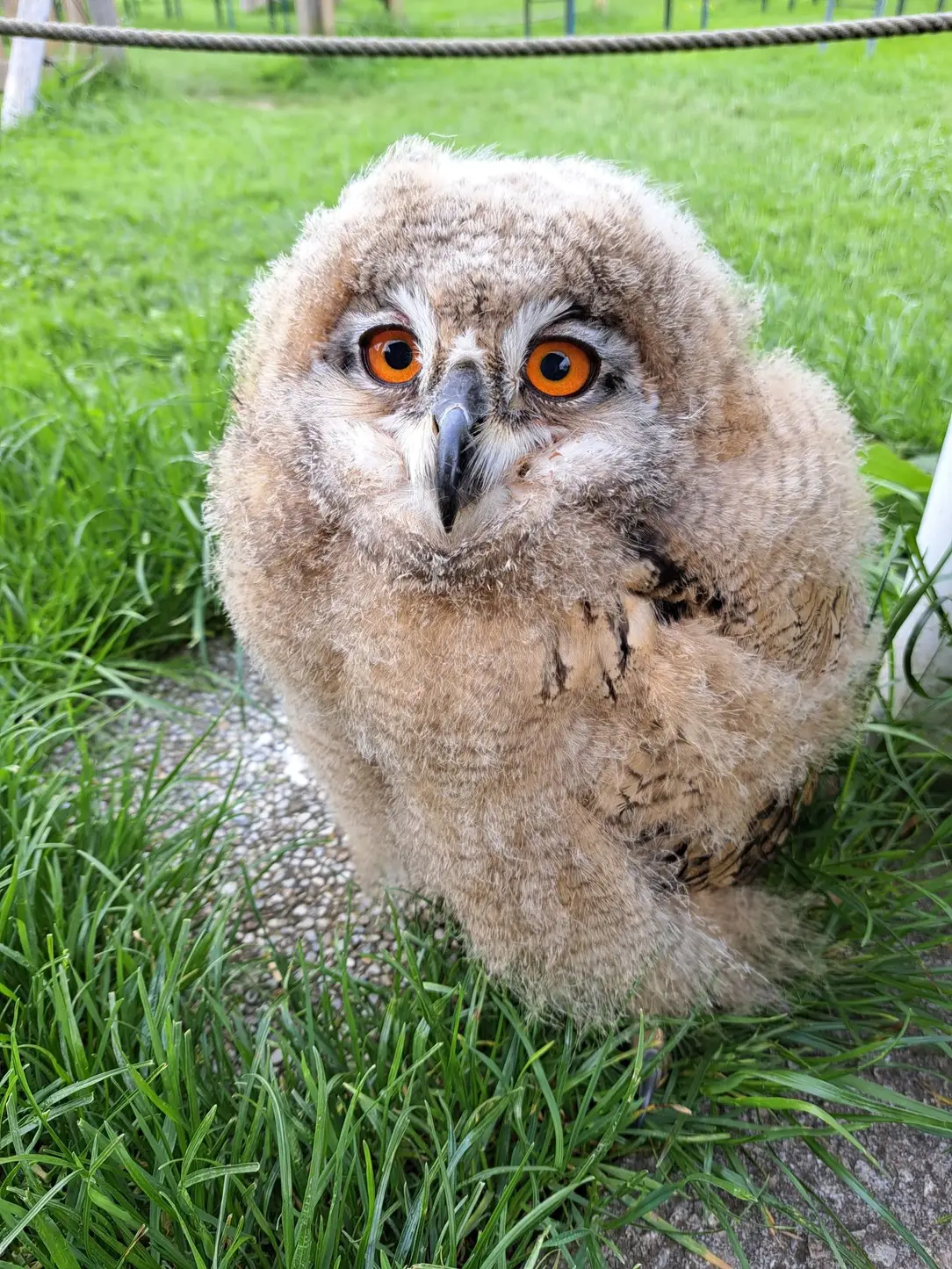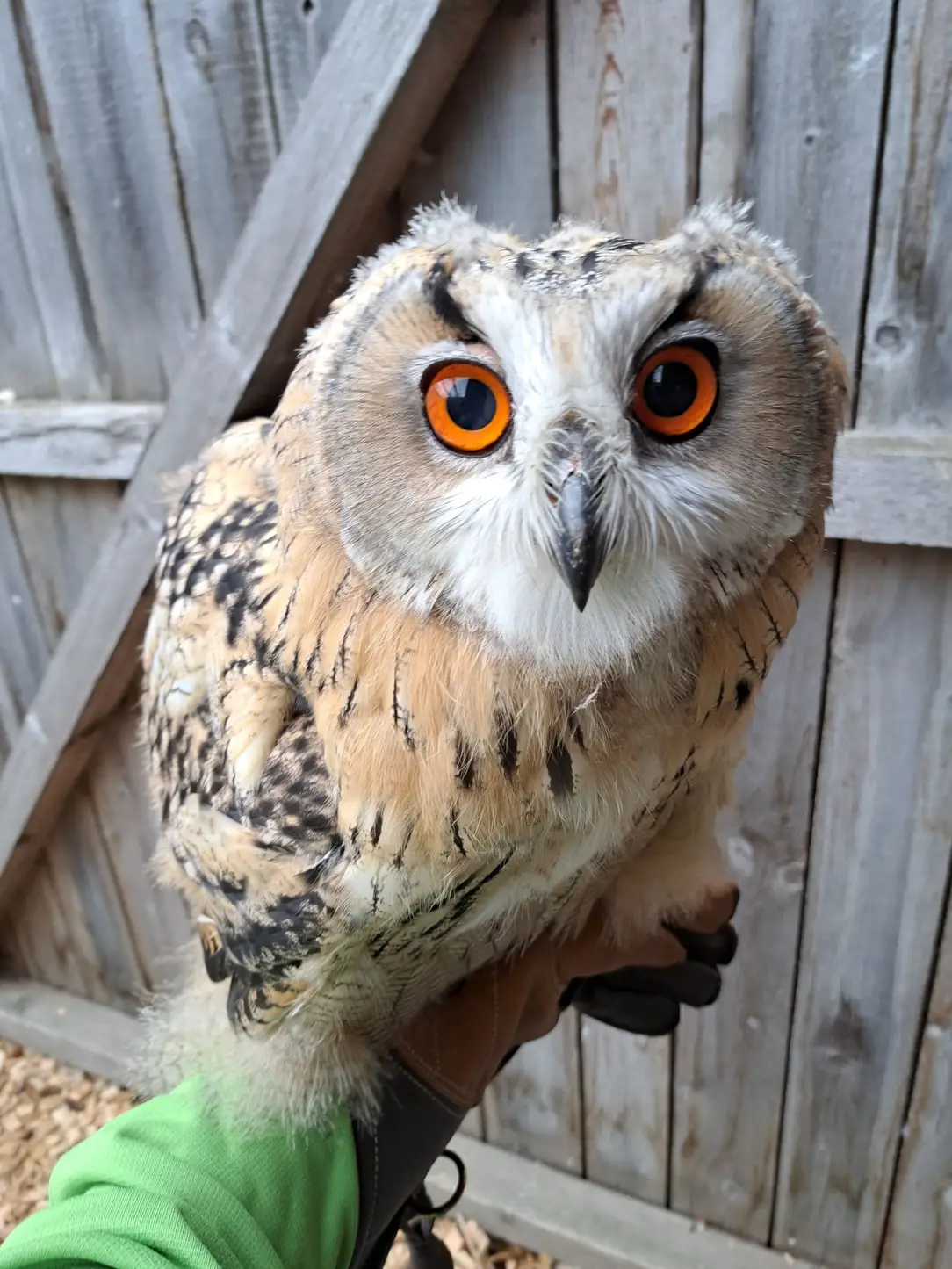From Alexandra Zwack
A LITTLE KNOWLEDGE ABOUT BIRDS OF PREY - The facial disc and the arrangement of the ears in owls
The facial disc of owls have a purpose: The special arrangement of the feathers around the eyes amplifies and directs sound waves directly to their ears. - like a kind of parabolic mirror, it collects the sound and directs it more precisely to the ears.
These are located exactly on the focal point of the facial disc, on both sides of the head. Many people think that these often seen "ear tufts" ARE the ears of the owls. But no! The ears are inside and hidden. Some of the owls don't even have these "decorative tufts"! Little owls, for example.
The owls that have them use them to express their mood. It is very important for the night hunters to be able to orient themselves even in complete darkness and to locate their prey using their sense of hearing.
In order to be able to locate the rustling of prey precisely, the ears are also slightly offset(*) (unlike humans, which are positioned at the same height).
The slight time shift of the sound in the ears provides the owl with a more precise location and allows it to determine the exact distance of the sound.
Examples of the facial disc in the pictures are of a Siberian eagle owl and a White-faced owl.
Even in a young bird that is about 5 weeks old, it can already be seen clearly.
(*) Note - not all owls have asymmetrical ears!
Original German
KLEINE GREIFVOGELKUNDE
Der Gesichtsschleier und die Anordnung der Ohren bei den Eulen -- Die Schleier der Eulen haben einen Zweck: Die besondere Anordnung der Federn um die Augen herum verstärkt und leitet Schallwellen direkt zu ihren Ohren. - er bewirkt wie eine Art Parabolspiegel die Bündelung und das genauere Führen des Schalls in die Ohren.
Diese befinden sich genau am Rand des Gesichtsschleiers, an beiden Seiten des Kopfes. Viele denken, diese oft zu sehenden "Puschel, Federohren" SIND die Ohren der Eulen. Aber nein! Die Ohren sind innenliegend und versteckt. Einige der Eulen haben diese "DekoPuschel" auch gar nicht! Käuze z. B.
Diejenige Eulen, die diese haben, nutzen diese, um ihre Stimmung auszudrücken. Für die Jäger der Nacht ist es sehr wichtig, sich auch bei völliger Dunkelheit orientieren zu können und ihre Beute auch mit ihrem Hörsinn ausfindig zu machen.
Um das Rascheln einer Beute genau lokalisieren zu können, sind die Ohren außerdem leicht höhenversetzt. (Anders als bei uns Menschen, die in gleicher Höhe angebracht sind).
Die leichte Zeitverschiebung des Schalls in die Ohren, liefert der Eule eine genauere Ortung und erlaubt ihr, die genaue Entfernung des Geräusches zu bestimmen.
Beispiele des Schleiers in den Bildern eines sibirischen Uhus und einer Weissgesichtseule.
Selbst bei einem Jungvogel, der ca. 5 Wochen alt ist, sieht man es schon ausgeprägt.



